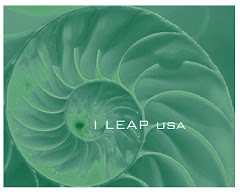To Learn or Not to Learn - Gestalt and Logic Functions
By Dr. Charles T Krebs
Part 2 continued
In the popular press these are often referred to as the “right and left brains” because of their anatomical distinctness and the differences in the way each hemisphere processes information.
These two hemispheres are not separate, however, as they are connected along most of their length at the bottom of the fis- sure by a structure called the Corpus Callosum (Fig. 1). Neurologically, the Corpus Callosum is approximately 200 million nerve fibers running between the two hemispheres. It functions much like a telephone exchange allowing a two way flow of communication between the hemispheres. Whenever the hemispheres are required to “work together” to produce an integrated function, the Corpus Callosum is the site of that integration.
Each cerebral hemisphere carries out a number of different functions, and each processes information in a very different way from its partner. It is as if each side of the brain is a specialized organ of thought, with the right hemisphere possessing a set of functions that complement those of the left hemisphere and vice versa (See Table 1). The right hemisphere functions in most people are global or Gestalt in nature dealing with the whole and recognition of overall patterns, while the left hemisphere functions in most people deal with logically sequenced analysis of the parts of the whole. It is because of these differences in functions and processing that the right hemisphere is sometimes called the “Right” or “Gestalt” brain and the left hemisphere the “Left” or “Logic” brain.
Table 1. Functions of and Information Processing in the Right and Left Hemispheres in most people.
GESTALT or RIGHT HEMISPHERE LOGIC or LEFT HEMISPHERE
LEAD FUNCTIONS: LEAD FUNCTIONS
Spatial Orientation Temporal (time)
Body Awareness Mathematics
Facial Recognition
Music Recognition (melody) Rhythm
Pre-verbal & Non-verbal (gestural) Language (verbal)
Interpreting Symbols Assigning Meaning to Symbols
Creative/Lateral
Thinking (daydreaming)
PROCESSES INFORMATION:
Globally, Wholistically as a Gestalt Linearly, Logically and Analytically
Simultaneously, Subjectively Sequentially
Intuitively Objectively (with reference to “Facts”)
“Knowing” based on intuition
While the popular press may refer to it as “right and left brain thinking”, it is not the physical hemispheres housing these functions that is important, but rather the location of the Gestalt and Logic functions themselves. In some individuals these cerebral functions may be transposed with the Gestalt functions physically located in the left hemisphere and the Logic functions physically located in the right hemisphere. By the definition of the popular press, these people would have their “right brain” in their “left brain,” which doesnʼt make any sense.
They just happen to have their Gestalt functions located in their left hemisphere and their Logic functions located in their right hemisphere. Only about 3-5% of people, however, display transposed Logic and Gestalt functions with 95-97% of people having their Logic functions in their left and their Gestalt functions in their right hemispheres. Because the dominant handtends to be opposite the Logic hemisphere, most people are right-handed, while many people with transposed functions (e.g. Logic right) tend to be lefthanded or ambidextrous.
It must be emphatically stated here that both hemispheres participate all the time at many levels in the “various thought
processes.” The way we think is a result of the degree of integration of the two hemispheres with each hemisphere contributing its own special capacities to all cognitive activities. The contrasting yet complementary contributions of each hemisphere is clearly demonstrated during complex mental activities such as reading as illustrated in the following quote from Levy: “When a person reads a story, the right hemisphere may play a special role in decoding visual information, maintaining an integrated story structure, appreciate humor and emotional content, deriving meaning from past associations, and understanding metaphor. At the same time, the left hemisphere plays a special role in understanding syntax, translating written words into their phonetic representations and deriving meaning from complex relationships among word concepts and syntax.” (1)
Although there is no activity in which only one hemisphere is involved or to which one hemisphere makes the only contribution, functions predominantly in one cerebral hemisphere may be all that are required for many simple cognitive tasks. There is both psychological and physiological evidence that the relative degree of activation of functions in the two
hemispheres varies depending upon the nature of the task being performed. When doing simple arithmetic tasks such as counting or adding 1 + 1, the Logic functions will be activated with little Gestalt activity required. A predominantly Gestalt task, such as matching patterns, will require little Logic involvement. The more complex the learning task becomes, the greater the degree of activation and integration of functions in both hemispheres that is required.
To read part 1:Part 1 To learn or Not to Learn
Tuesday, March 3, 2009
Part 2 To Learn or Not to Learn - Gestalt and Logic Functions
Labels:
brain integration,
Charles T Krebs,
i-leap,
ileapusa,
LEAP,
learning dysfunction




